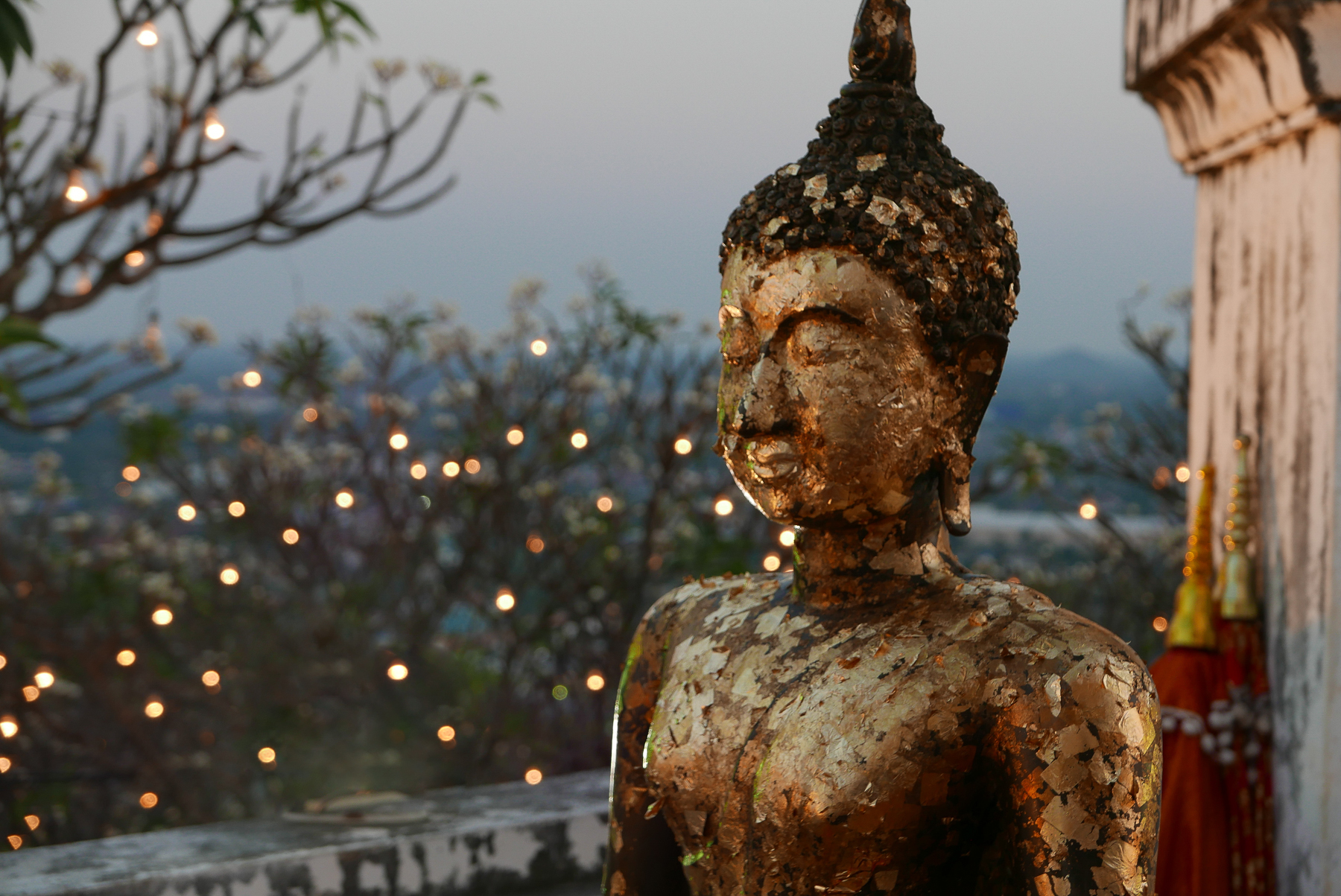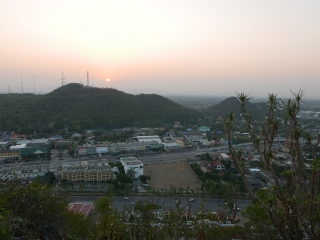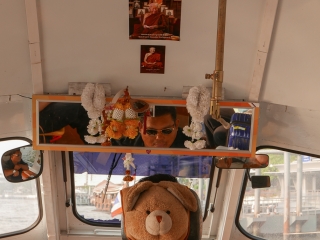Phetchaburi city is one of Thailand’s oldest settlements. The few hills it has catch the eye in an otherwise flat region, and there are many interesting structures on them, so I make it my plan to explore these hills.
Read the first part here.
Hill #2: Khao Bandai It
Cave, temple and giant Buddha
Situated on the outskirts of Phetchaburi, this hill fortunately does not expand my list of misadventures, like Khao Luang had the day before. Not a single visitor is around when I arrive at 8am, but I do attract the attention of a temple worker, K., who kindly offers to show me the cave. The atmosphere is very different from yesterday’s cave temple. Khao Luang, very popular among Buddhists of many nations, consisted of giant caverns with a couple of ceiling holes that allowed a very photogenic light in. Today’s cave is much less visited, darker and more convoluted, with narrow corridors, dead end passages or niches that are used for meditation. The heavy damp air, combined with the smell of incense, and the eyes of the hundreds of statues that adorn every flat surface, give it a mystical quality. I feel I have to whisper my questions to K.

We continue our walk to the giant Buddha on the hilltop, visible from downtown Phetchaburi. K. tells me about his life: he was educated at a temple thanks to a kind monk who took him in, and worked abroad for a while, where he learned to speak English. Though he likes his job at the temple, he is thinking of starting a repair business together with a friend, a life decision he currently ponders. We realize we are close in age, and while he shows me chedis and tells me their legends, we also discuss how to feel accomplished with one’s job. We finally reach the giant sitting Buddha, humbling through its sheer size, and humbled itself by the elaborate scaffold around it. I have to squint my eyes when K. points to the only worker (because that’s all the temple could afford) laying the final pieces of gold mosaic on the Buddha. After years spent under construction, the Buddha should be ready in one month, though the statue also has an enclosure, and there are talks about replacing it with a higher one. One thing is certain: there will be a big celebration when the statue is ready.
As we return to the base of the hill, the late morning heat is biting through our skin. K. offers to give me a ride back to the city, since he has some errands to run for the temple. Nonchalantly, he removes the cover off an immaculate black SUV and invites me in. He turns on the A/C and the music, and we drive off into the suburban landscape listening to Adele.
•••
Hill #3: Khao Wang
Royal palace, observatory and religious structures
Khao Wang, the largest hill in Phetchaburi, plays such a role in the city’s history and boasts such majestic structures, that it has its own nine-day festival each year. Which unintentionally coincided with my visit to Phetchaburi.
During the fair, the hill and its buildings are decked in fairy lights and host a lot of colorful shows. From the distance it looks as if a magic castle is floating in the night sky. Spilling over at the base of the hill is an endless night bazaar with anything you could ever wish, from mattresses, artificial flowers, and super sharp knives sold stand-up style, to a lottery, a car show turned beauty pageant, a ferris wheel, and a disarming array of foods.

It took two attempts to explore this hill properly. On the first evening, as I was strolling in the bazaar, I realized I was the only farang around. Seeing myself among so many unfamiliar faces, who were all moving about with a purpose, all I could think of was my own foreignness stamped in capital letters on my forehead. This self-awareness caused a photographer’s block; I didn’t even make it to the hill and returned home scolding myself.
On the second evening, I dodged the bazaar and went straight to the hill. I climbed the cobblestone paths together with large groups of schoolchildren (there’s also a lazy way uphill, via cable car), and watched them perkily taking selfies at each step and dancing to the music around. A young mom asked for a selfie with me and her baby, and then there were other similar requests. My reticence dwindled. The higher I climbed, the more carefree people were, and the more we tacitly marveled at the beauty of this night and of the frangipani woods, with their trees devoid of leaves but full of flowers and colorful lights. And just like the monkeys had steered my morning into anxiety, the people on this hill and their way of enjoying life were steering my evening into a lighthearted social feeling, until I truly felt I belonged there and wished to be nowhere else. The context was identical to that of the previous, failed evening, but my response to it had changed, and I told myself that’s what traveling means, letting go of who you think you are and becoming an antenna for the world around.
Full of courage after this realization, I descend back into the night bazaar, smile at people, take out my camera, and start photographing like I own the place.











Leave a Reply